As a 3D artist, I do use the Golden Ratio in my designs and I find it fascinating. I did thorough research for this article through various articles and YouTube videos, I learned a lot and I’m excited to share my findings with you.
In this article, we’ll explore what the Golden Ratio is, its history, how it is seen in everyday life, and how it can be used in art and design.
Here are the sections we will explore:
- What Is The Golden Ratio?
- History of the Golden Ratio
- Golden Ratio in Everyday Things
- How to Create The Golden Ratio Spiral?
- How to use the golden ratio in your artwork and designs?
- How to use the Golden Ratio for Anatomy?
- Use the Golden Ratio
What Is The Golden Ratio?
The Golden Ratio, also known as the divine proportion or Phi, is a mathematical ratio that appears in nature, architecture, and art. It is approximately equal to 1.61803398875, and many researchers believe that it is pleasing to the human eye.
The Greeks used it in their architecture, and it was also found in many ancient buildings. Leonardo da Vinci was obsessed with the Golden Ratio and used it a lot in his art.


Using the Fibonacci sequence we can calculate the Golden Ratio.
The Fibonacci sequence is a series of numbers in which each number is the sum of the two preceding ones (0, 1, 1, 2, 3, 5, 8, 13, 21, 34, 55, 89, 144, and so on). [1]
If you keep taking a number in the Fibonacci sequence and divide it by the number before it, you will get to the Golden Ratio as the sequence progresses.
The Golden Ratio is also found in many natural forms such as flowers, shells, and even the human body.
Next, we’ll explore the history of the Golden Ratio and how humans used it throughout time.
History of the Golden Ratio
The Golden Ratio has a long and fascinating history, dating back to ancient times. One of the first recorded mentions of the ratio is in the work of Leonardo of Pisa, also known as Fibonacci, who wrote the book Liber Abaci in 1202.

The book contained math problems, including the Fibonacci sequence, which inspired the Golden Ratio.
Ancient Greek architects used the Golden Ratio to create a sense of balance and harmony in their designs. One of the most famous examples of the Golden Ratio in architecture is the Parthenon in Athens, Greece.
The Golden Ratio became more popular among artists and architects during the Renaissance. Leonardo da Vinci used the ratio in his paintings a lot, including the Mona Lisa and The Last Supper. He believed that the Golden Ratio was so important that he called it “divina proportione” or divine proportion.
The German mathematician Johannes Kepler discovered the Golden Ratio in the Fibonacci sequence, and he wrote about it in his work. Since then, many fields, such as science, math, art, and design have used the Golden Ratio.
Next, we’ll explore how the Golden Ratio appears in everyday objects and things.
Golden Ratio in everyday things
You can find the Golden Ratio in various objects and phenomena around us every day, sometimes in ways we may not recognize.
Nature is one of the most well-known examples, with the ratio appearing in the spiral patterns of shells, pine cones, and even galaxies.
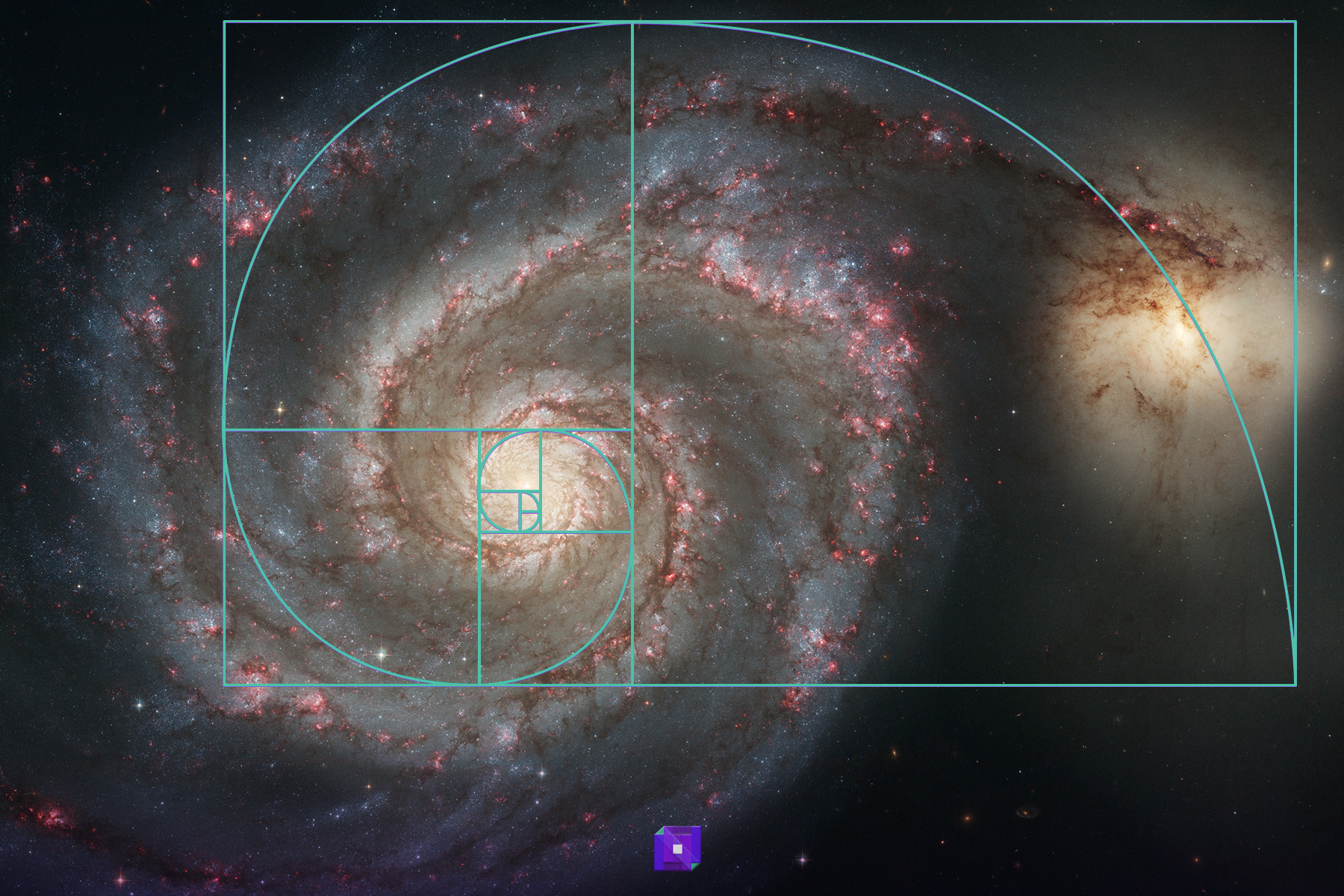
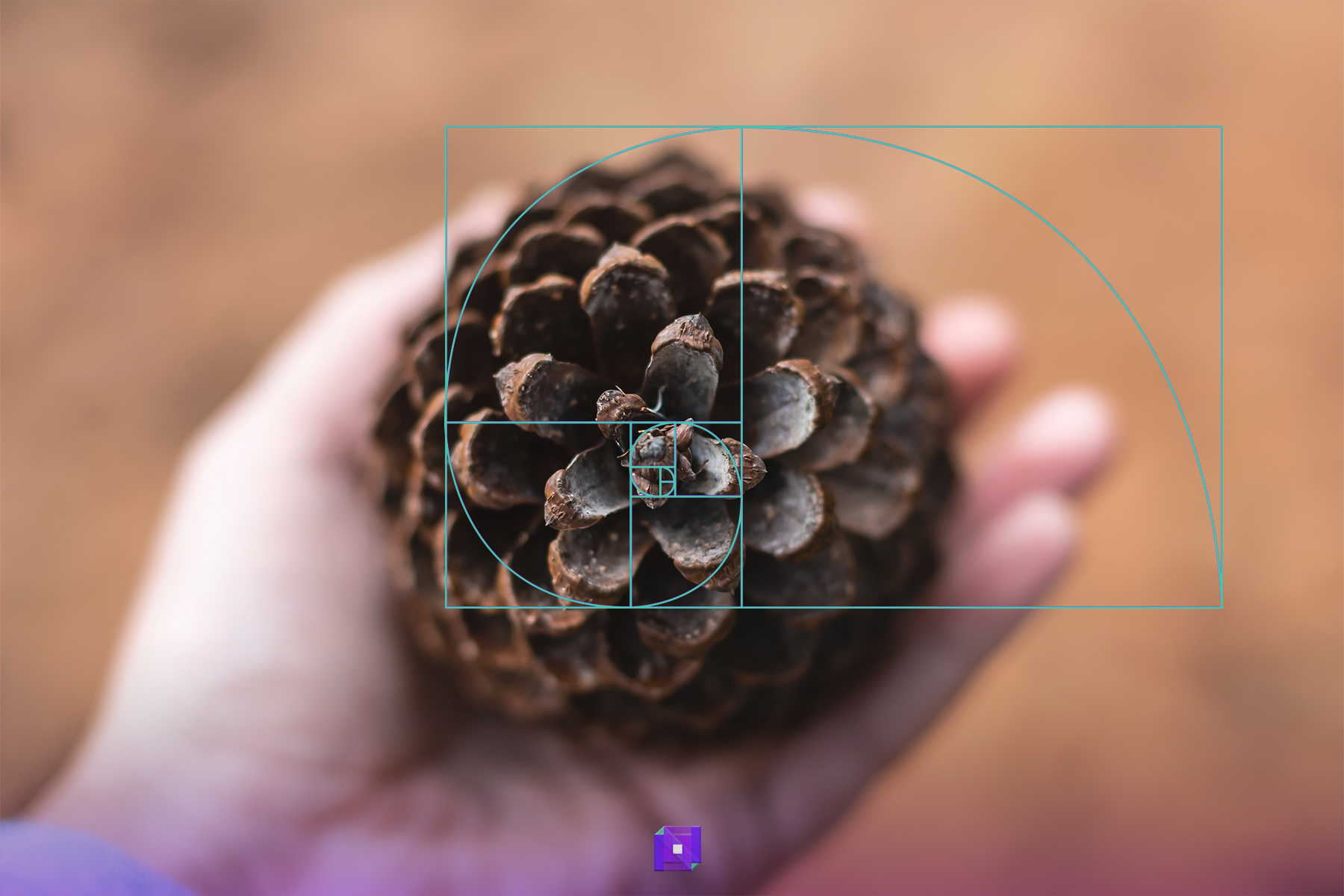

Even in today’s architecture, the Golden Ratio appears to create a sense of balance and harmony. Buildings such as the Notre Dame Cathedral in Paris, the Great Mosque of Kairouan in Tunisia, and the United Nations building in New York City.


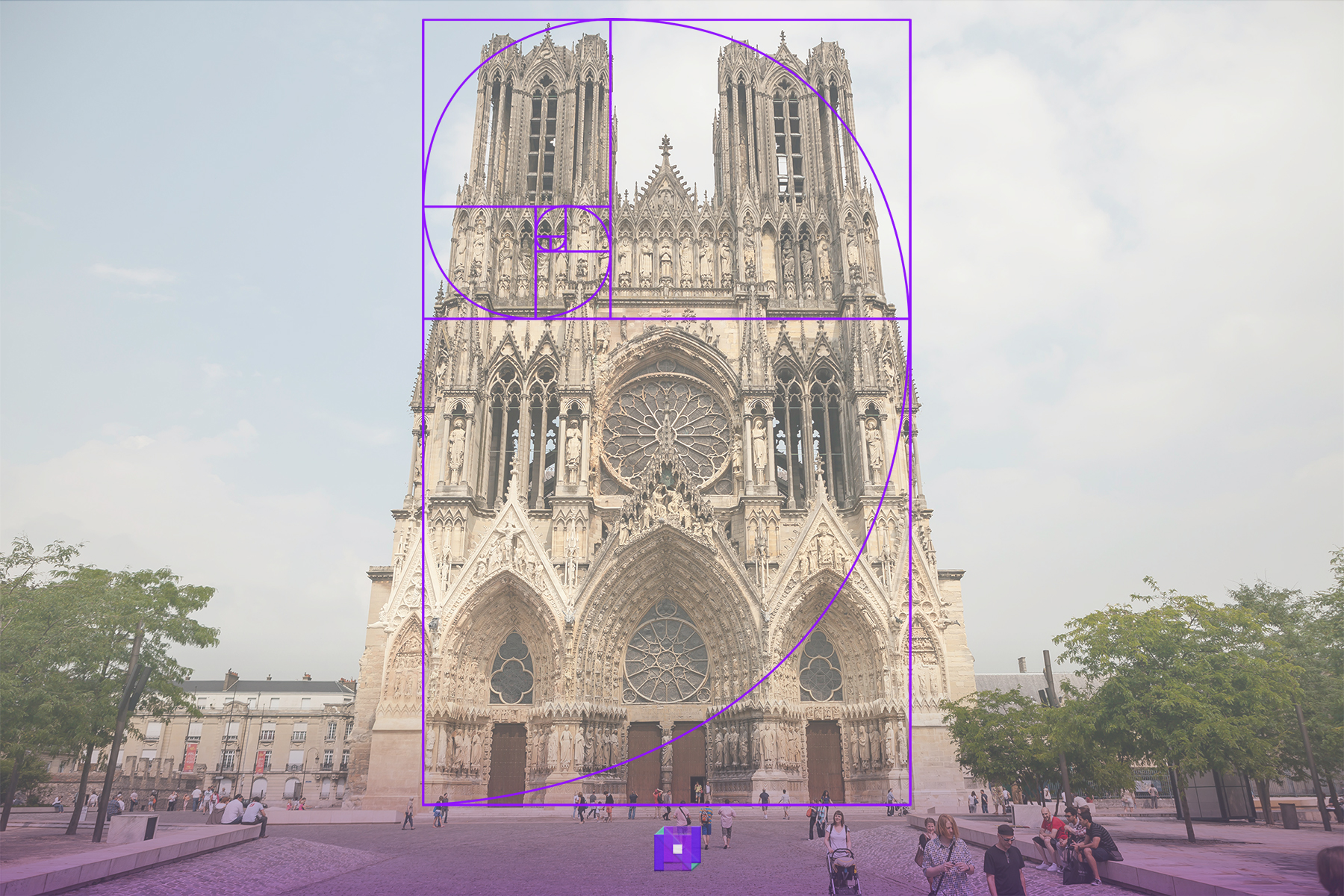
Besides nature and architecture, the Golden Ratio also appears in logos and branding. Apple, Twitter, and Pepsi have used the Golden Ratio in their logos and advertisements.

You can find the Golden Ratio all around us! We can see it in art, design, nature, and even in the buildings we live in. It’s everywhere!
Next, we’ll explore how you can create the Golden Ratio for yourself.
How to create the golden ratio spiral?
You can make the Golden Ratio by following a few easy steps. We use the Fibonacci sequence to make a bunch of squares. Next, we will make a spiral that matches these proportions using the rectangle.
Here’s a step-by-step guide on how to create the Golden Ratio rectangle and spiral in Adobe Illustrator or equivalent:
I recommend to click on the image to get into Lightbox mode to see the images full size, best viewed on desktop or tablet.
With this simple process, you can create the Golden Ratio for yourself and apply it to your artwork and designs. In the next section, we’ll explore some of the ways you can use the Golden Ratio in your creative endeavors.
How to use the golden ratio in your artwork and designs?
The Golden Ratio can be used in a variety of ways to create visually appealing and harmonious designs. Here are some common techniques and applications of the Golden Ratio in art and design:
- The Golden Rectangle: The Golden Rectangle uses the Golden Ratio to create a rectangle with pleasing proportions, the rectangle’s sides make up the golden ratio if you divide the elongated side by the short side. Divide the Golden rectangle into a grid, two lines horizontally and two lines vertically. Use the grid of the rectangle as a guide for the composition of your artwork, helping to balance the elements and create a sense of harmony. Put your subject in the intersection of the Golden Rectangle lines, additionally, you can place strong lines of your subject on the lines of the Golden Rectangle.


- The Golden Spiral: The Golden Spiral is a logarithmic spiral that follows the Golden Ratio (the same one we created earlier). As shown, the Golden Spiral can be found in nature and can be used to create dynamic compositions in your artwork. You can also use the Golden Spiral as a guide for placing your focal point or creating a sense of movement and flow.

- The Golden Triangle: You form the Golden Triangle by connecting the midpoint of one side of a Golden Rectangle to an opposite corner. As a result, you will get two intersections, these intersections can be your point of interest, additionally, the lines can be leading lines that lead to your point of interest. Use it as a guide for the composition of your artwork, helping to balance the elements and lead the viewer to your subject of interest.

You can also use the Golden Ratio in a variety of applications in art and design, including:
- Layouts: The Golden Ratio can help create pleasing layouts for print and digital media, it helps with the placement of elements to create harmony.

A traditional website also uses the Golden Rectangle for layout.

- Typography Hierarchy: Use the Golden Ratio as a guide for typography to establish a hierarchy and create a balanced and harmonious placement of text. If you know the headline text size, let’s say it is 82 pt, then divide 82 by 1.618 (Golden Ratio), and you will get 50.5 pt for your body text size, this will give you a harmonious layout with topography.
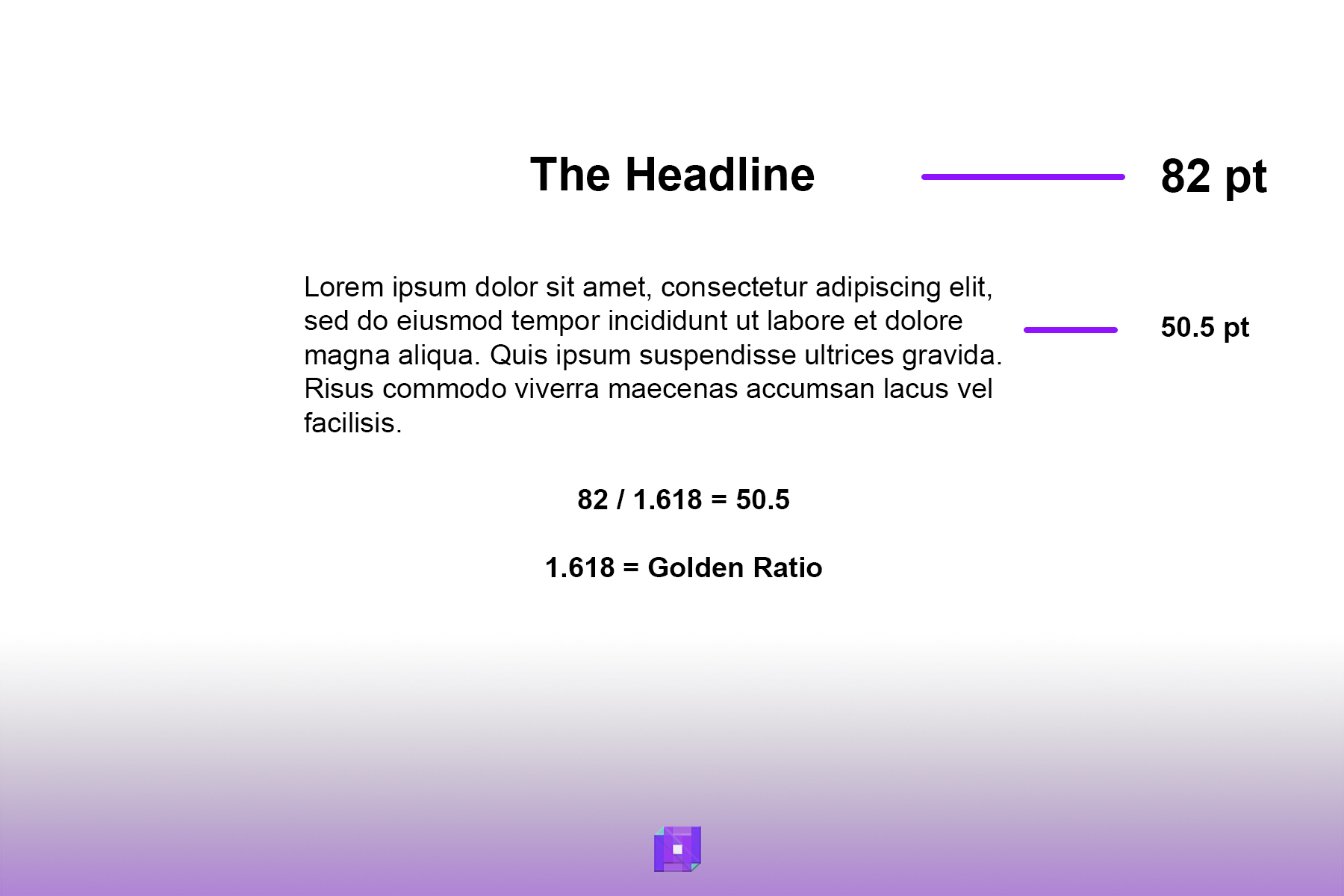
By incorporating the Golden Ratio into your artwork and designs, you can create compositions that are visually pleasing and harmonious.
In the next section, we’ll explore how the Golden Ratio can be used to create realistic and proportionate human anatomy.
How to use the Golden Ratio for Anatomy?
In human anatomy, you can use the Golden Ratio to create pleasing proportions.
Here are some ways to use the Golden Ratio for anatomy:
- Height: Divide the height of a person into two parts. The distance from the ground to the belly button, and the distance from the belly button to the top of the head. Ideally, the ratio of these two parts should be around 1:1.618.

- Arm Length Proportions: The ideal proportion of the length of the entire arm, from the shoulder to the fingertips, to the length from the wrist to the fingertips is in a ratio of about 1:1.618.

- Leg Height: Divide the length of the legs into two parts: the distance from the ground to the knees, and the distance from the ground to the hip, the full leg length. The ideal ratio of these two parts is also 1:1.618.

- Face Proportions: You can apply the Golden Ratio to the proportions of the face, with certain features falling in specific ratios. For example, the distance between the pupils to the distance between the pupils and the middle of the chin should be in a ratio of 1:1.618.
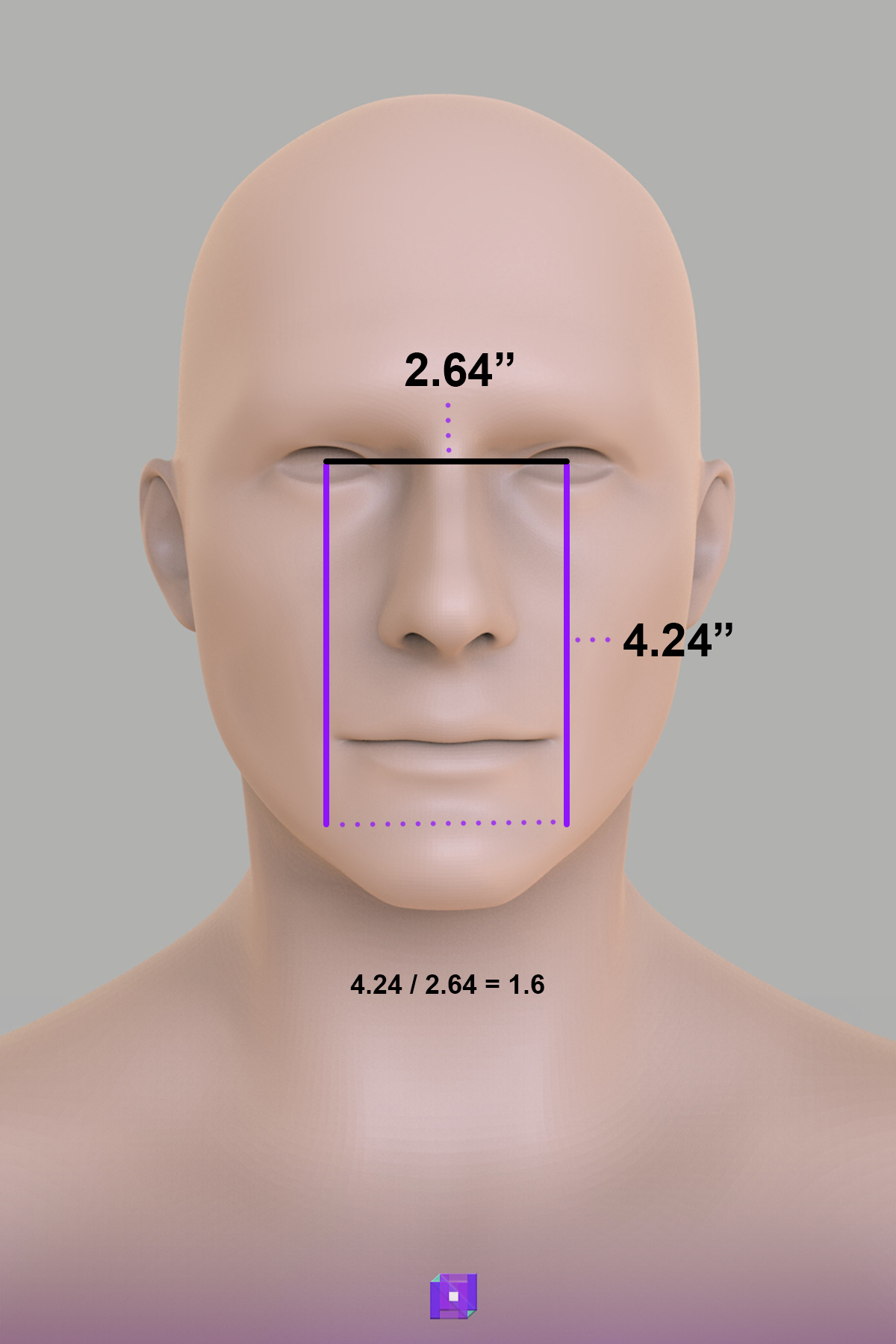
Additionally, the distance from the tip of the nose to the bottom of the chin should be in a ratio of 1:1.618 to the distance from the lips to the bottom of the chin.

By incorporating the Golden Ratio in your art and designs, you can create a sense of harmony and balance that is pleasing to the eye.
Use the Golden Ratio
Whether you take pictures, make art, or design things, knowing about the golden ratio and how to use it can improve your work. Follow the steps in this article to start using the golden ratio in your designs and make them more attractive.
Use it as a tool to create a beautiful and balanced composition.
Below is a downloadable PDF of the Golden Ratio you can use in your work as a guide.
Next, take a look at our article on Color Theory, this article will explain and show how color can be used in your work and why.




